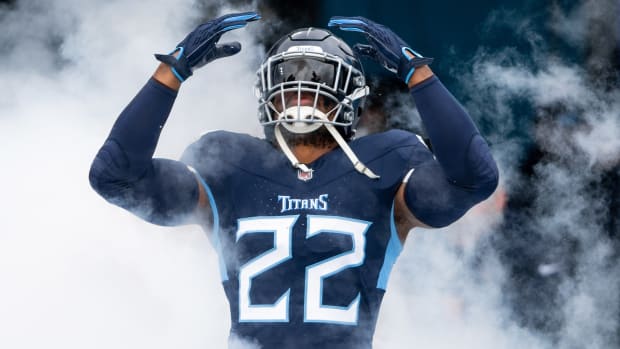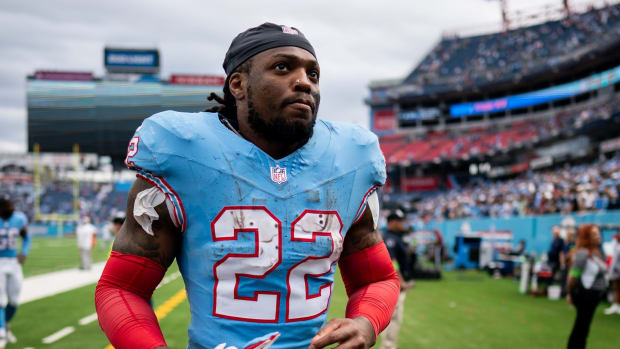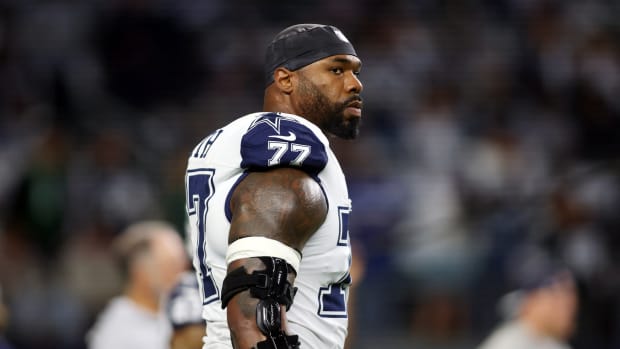Carthon Won't Have as Much to Work With as Others This Offseason
NASHVILLE – When former general manager Jon Robinson took over the Tennessee Titans in 2016, the biggest challenge he faced was obvious: The team was coming off a 3-13 season and had won five games combined in two years.
The biggest advantage he had was also obvious: Robinson held the number one overall pick in the 2016 draft, a selection he eventually parlayed into the famed “King’s ransom” – multiple draft picks in 2016 and 2017.
The situation new Titans general manager Ran Carthon faces is tilted in the opposite direction.
His potential advantage is a better initial talent base, a team that appeared well on its way to a seventh straight winning season last year – up until injuries, a lack of depth and a woeful offense doomed Tennessee to a seven-game losing streak and 7-10 record.
His biggest challenge, on the other hand, is that Carthon doesn’t have the automatic ace up his sleeve to change the future, the way Robinson did with the number one overall pick in the 2016 draft.
In fact, Carthon may well find his first offseason more taxing than Robinson’s, based on factors such as draft capital and the roster’s current salary-cap situation.
Pro Football Focus recently ranked the Titans 26th out of 32 teams in its NFL Offseason Resources Composite table, which based its conclusions on draft capital (the number of picks a team has in the draft and where the picks are positioned), effective salary cap space, and prorateable money (the ability to restructure contracts to create cap space).
A closer look at those three categories:
Draft Capital
The Titans currently have six selections in the 2023 draft – one pick each in the first, second, third, fifth, sixth and seventh rounds. The fourth-round pick went to Atlanta as part of the Julio Jones deal during the 2021 offseason.
Unofficially, the Titans – barring trades – will be picking 11th, 41st and 72nd in the first three rounds. The exact spot of the final three picks will be determined after the NFL awards compensatory picks (the Titans aren’t expected to get any).
Another comparative site ranks the Titans 10 spots higher – 11th in draft capital – based on the Jimmy Johnson model of valuing selections.
Assuming the actual picks in the first three rounds don't change the 11th pick will be the Titans’ highest first-rounder since 2014 when they chose Taylor Lewan at that same spot. The 41st pick will tie for the Titans’ second-highest second-rounder in the last five years (Roger McCreary was 35th last year), and the 72nd pick will tie for the Titans’ second-highest third-rounder in the last six years (Nicholas Petit-Frere was 69th last year).
Effective Salary Cap Space
PFF lists the Titans 30th among 32 teams in terms of favorable cap situations heading into the offseason, protected from the basement only by the New Orleans Saints and Tampa Bay Buccaneers. That assessment is on par with overthecap.com, which lists the Titans as currently $23.4 million over the cap heading into the offseason.
The Titans are looking at eight players with cap hits over $13 million for 2023: Ryan Tannehill ($36.6 million); Bud Dupree ($20 million); Kevin Byard ($19.6 million); Harold Landry ($18.8 million); Derrick Henry ($ 16.4 million); Lewan ($14.6 million); Robert Woods ($14.6 million); and Zach Cunningham ($13.4 million).
But the situation may not be quite as dire as it appears. That’s because of the next category.
Prorateable Money
The Titans rank at the top of the NFL chart when it comes to prorateable money, which is the ability to restructure contracts to create cap space.
Teams don’t want to do this too often because of what it does to their budgets in future years, but it certainly makes sense in the case of players like Tannehill this offseason. Assuming the Titans choose to keep him as part of the future, it would seemingly be essential – and doable – to restructure his deal so that it won’t take up over 16 percent of the team’s 2023 salary cap.
The Titans will also have the ability to save money under the cap by releasing players, a tempting option with players like Lewan and Woods, as the team wouldn’t have to worry about much of a cap penalty.
All in all, Carthon clearly faces some pretty formidable challenges in his first offseason.
Having said his final goodbyes to the 49ers last weekend in San Francisco, he's now immersed in all things Titans, seeking ways to deal with these critical issues.





